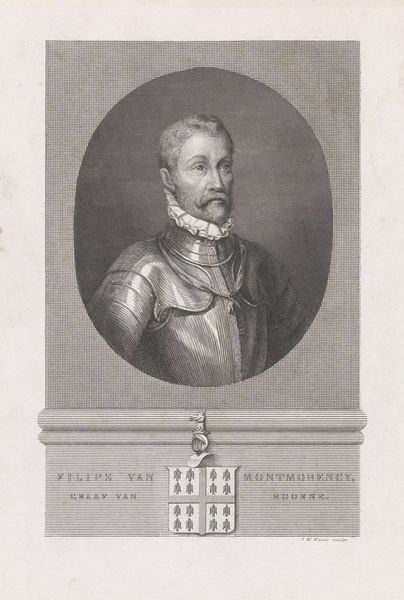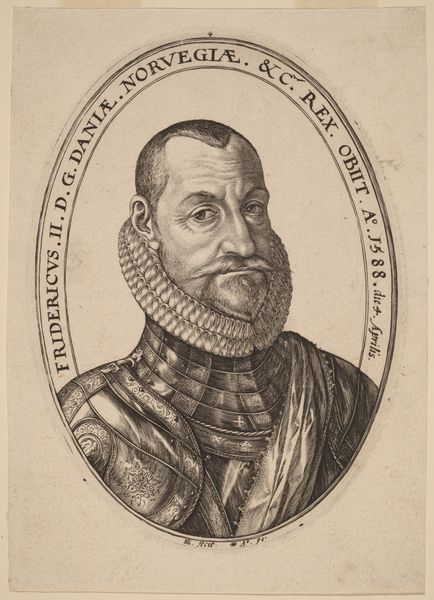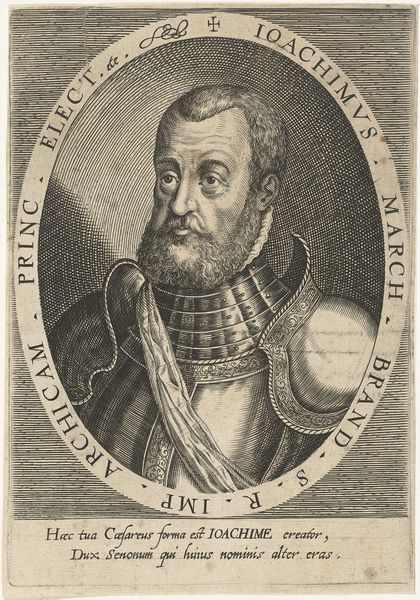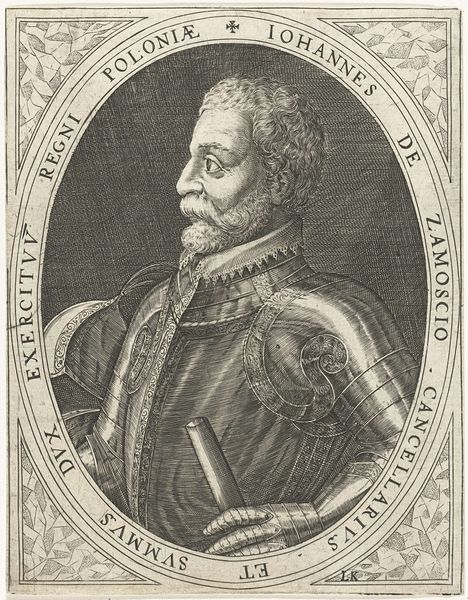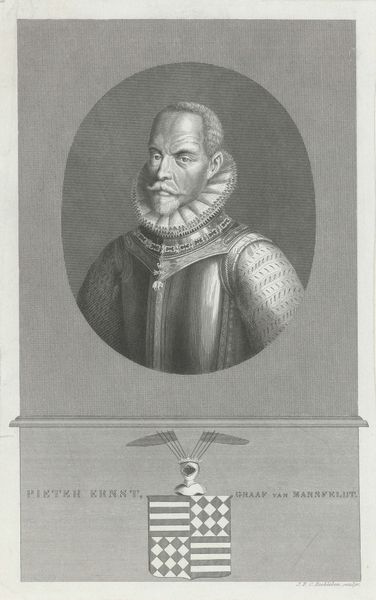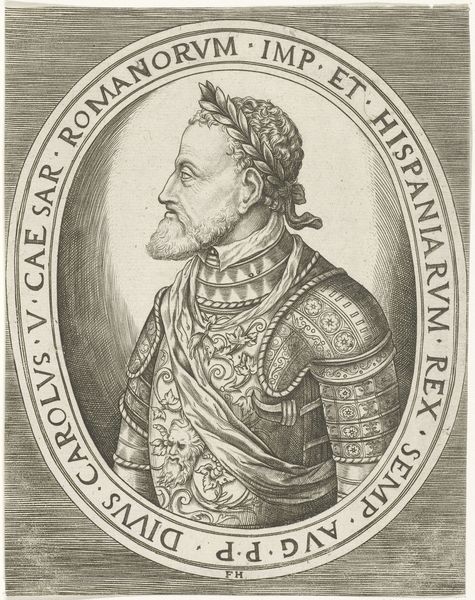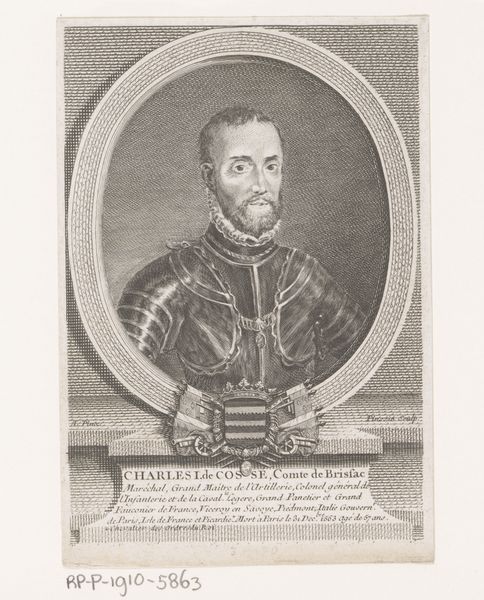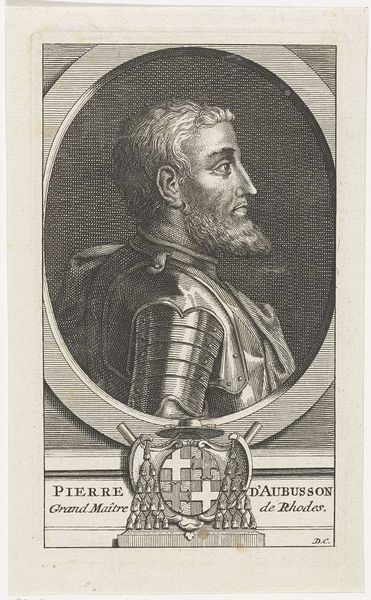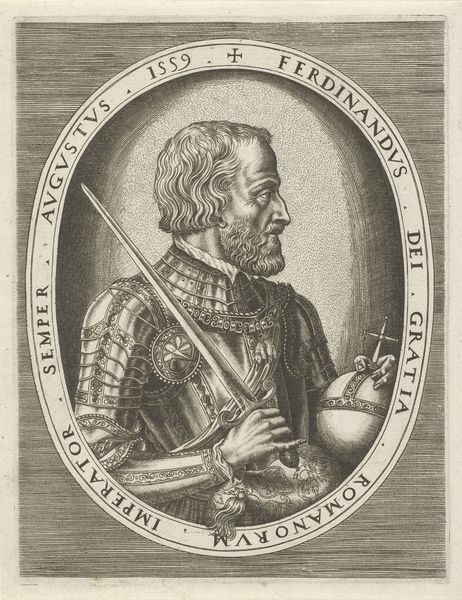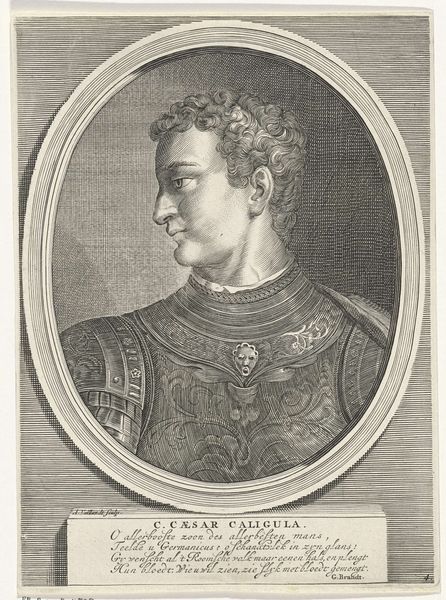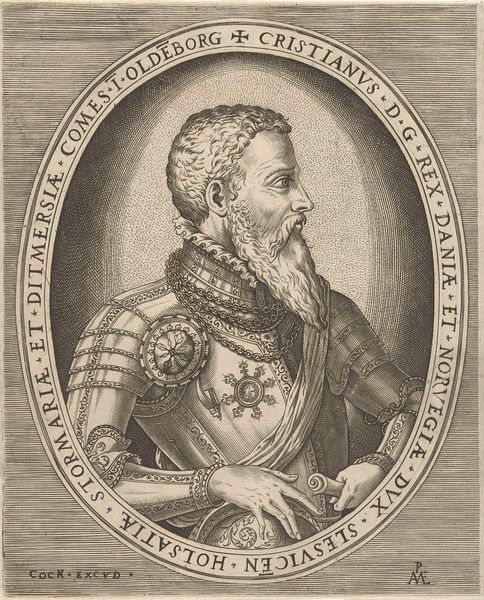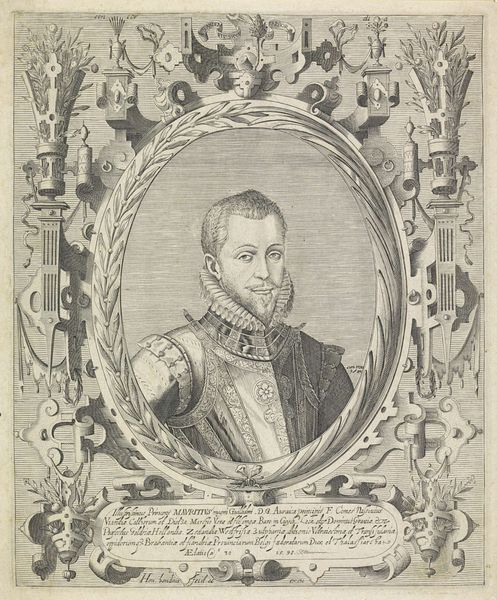
print, engraving
#
portrait
#
pencil drawn
# print
#
pencil sketch
#
old engraving style
#
11_renaissance
#
pencil drawing
#
portrait drawing
#
pencil work
#
history-painting
#
northern-renaissance
#
engraving
Dimensions: height 203 mm, width 162 mm
Copyright: Rijks Museum: Open Domain
Editor: This is a print entitled "Portret van Karel V van Habsburg of Filips II van Spanje," created between 1546 and 1562 by Frans Huys. It’s currently at the Rijksmuseum. It feels very…stately, I guess. So proper and posed. What do you see in this piece? Curator: I see a portrait that embodies the intersection of power, representation, and the developing visual culture of the Renaissance. Huys, through this engraving, isn’t just depicting a man; he's constructing an image of authority during a period of immense religious and political upheaval. What do you think this image conveyed to its original audience, during this very specific historical moment? Editor: Hmm, probably an image of stability and power. You know, the Habsburgs trying to look strong in a time of religious conflict? Curator: Exactly. The meticulously detailed clothing, the fur collar – these are carefully chosen symbols of wealth and status, reinforcing a particular identity. How does this relate to contemporary conversations around representation and power, do you think? Does this image make you question what wasn't captured? Editor: It does make me think about who gets to be portrayed, and how. Maybe the stories of the people under their rule were not represented in this artwork. It definitely prompts questions about visibility, especially when considering gender or race. Curator: Precisely. The image can become a starting point for questioning whose narratives are historically prioritized and, by extension, whose are silenced or erased. And it highlights art's potential both to reinforce and to challenge existing power structures. Editor: I see what you mean. Looking at it that way, it isn't just a portrait, it is a statement. Thanks, that was really insightful. Curator: Likewise, your fresh perspective enriches the reading, underscoring the continued relevance of these historical images within our current social and political landscape.
Comments
No comments
Be the first to comment and join the conversation on the ultimate creative platform.
